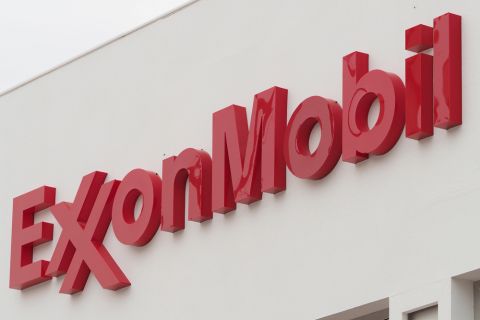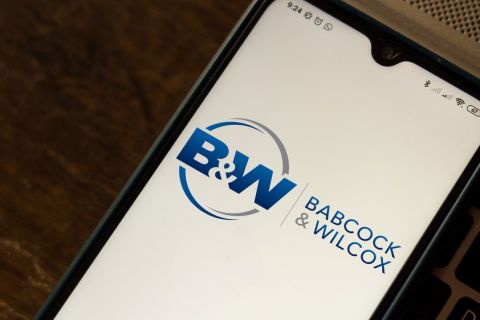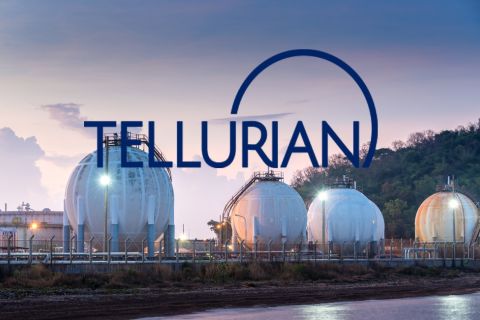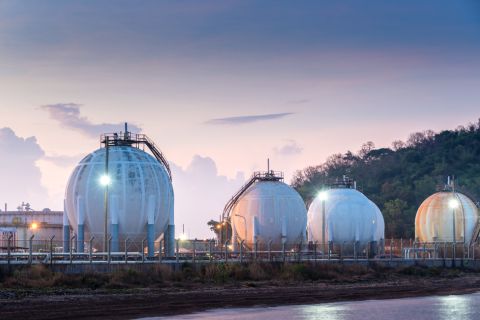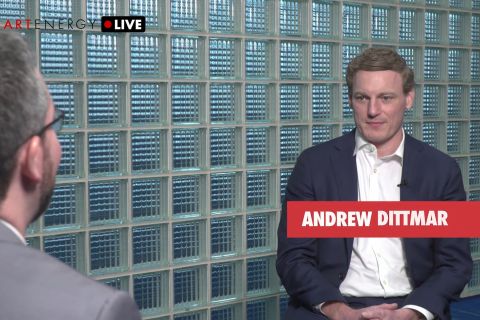Velda Addison, senior editor, energy transition/renewables, Hart Energy: I'm Velda Addison, and this is a Hart Energy LIVE exclusive interview.
Gerard Barron, CEO, The Metals Company: The Metals Company are developing a very large deposit of seabed resources, and they come in the form of polymetallic nodules that literally lie on the ocean floor, and we have some licenses that have been granted to us by the International Seabed Authority in the Pacific Ocean, about a thousand miles off the coast of Mexico. And we've identified about 1.6 billion tons of these nodules. And they're full of nickel and copper and cobalt and manganese and their metals that we're going to need a lot more of as the decarbonization pathway picks up pace.
Cindy Taylor, CEO, Oil States International: You know, in many ways, I run Oil States. I'm the CEO and I think of The Metals Company as the operator in an oil and gas world, meaning they are the explorer, the lease holder, and they're going to contract out a lot of the critical equipment and services. And we provide one element of that, which is the riser system to basically serve as the vertical conduit from the seabed to the floating vessel to bring these nodules up to the surface from, we'll call it a harvester or minerals retrieval device on the subsea floor. And so we're very excited about the opportunity to work together. What we're trying to do is take decades and core expertise in conventional applications. We do all types of riser systems already to move conventional oil and gas from the seabed up to floating surface facilities. So why not translate that history and knowledge into new applications, new customers, and satisfy a lot of the investment opportunities that are coming into the space associated with energy transition.
VA: So battery materials can be found onshore. Why deep sea mining?
GB: Well, what people have realized is that decarbonization is going to require a lot of metals. And as they say, if it isn't grown, it's mined. And the International Energy Agency expects that between now and 2040, we're going to have to increase metal extraction by between five and 600% per annum. Now, what do we need metals for? Well, we need them to build the batteries. We need them to build the windmills, the storage for the grids, and we also need them for the ongoing industrialization, the developing world. And population growth all puts extra demands on metals.
And so there are metals on land, but what we have to be thinking about is where can we supply the metals that we're going to need in the following decades with the lightest planetary and human touch? And we have to rethink it because at the moment what we're doing is pushing into our most biodiverse carbon sinks, also known as our rainforest, particularly in Indonesia and the Philippines and the Amazon and we're having to destroy these rainforests to get access to the metals that align underneath them.
And along the way, we dislodge indigenous communities, we generate terrible waste and tailings, which often gets dumped into our rivers in our oceans. And we also release all the sequestered carbon that is stored in those ecosystems. There's a much better way of where we can get these metals from, and it sits in the form of polymetallic nodules that sit in the abyssal zone. We think of it as a large marine desert, it covers about 43% of our entire planet, [and it] is deemed abyssal zone. And it's an area where there is no flora, so no plants at all. And the fauna is primarily bacteria living in the sediment. So, it doesn't mean it's not important. And that's why we've been spending hundreds of millions of dollars to better understand this environment, to understand what the connectivity is, and also what will [be] the impact if we go down and start collecting these rocks. And that's all come together over the last decade. And we're preparing to finalize our environmental impact assessment, which will lodge with the regulator by the end of this year.
We should also pay special tribute to Allseas. So our largest investor is Allseas. And it was factored this same show that I met Edward Heerema in 2018 and shared with him what we were doing. And Allseas have become our biggest investor. And they also took on the job of developing our first production system. And so that we signed that agreement in 2019. And so Allseas were not only our largest investor, but also responsible for delivering the pilot mining system. And that system involved the purchase of a boat. They bought a former Samsung 10,000 drill ship, which they converted to our first harvesting vessel. They built the robot, it crawls along the sea floor collecting these little rocks, and they also engaged with Allseas and other vendors to bring those components together.
The beauty for us though was that Allseas as an operator took full responsibility of delivering all of the key performance important measurements for that campaign. And so last year we spent four months on the water harvesting nodules. We harvested just under 5,000 tons. We brought 3000 tons back. And you can see pictures of that on our website at Metals.co. But the big job now is to get production ready. And so Allseas have already started work since the boat return. They've invested more than 15,000 hours already. There will be many tens of thousands of more hours getting ready for production. And that's going to involve expanding the existing collector, building a new bigger connector. And it's also going to mean a bigger riser because the hidden gem will be firstly engineered for around 1.3 million tons. But our hope is that it can handle up to two and a half, 2.6 million tons. And we've got 1.6 billion tons that need collecting. And the world needs these metals. And if we can supply these metals with such a enormously less impact than we need to get on with it.
CT: So I'll echo that, and Allseas has been a legacy relationship we've had for many, many years. And so to Gerard's point, they're bringing us in because we have long history of working together. They know our people, our technology, and they know our capabilities. And you go to exciting opportunities. He mentioned one, which is how do we expand the riser system to be even more efficient from what it is now? And those you have to work together because the Allseas vessel is going to have certain limitations and just a whole lot. We're testing this, we actually think the riser system that we've had in play may be the world's deepest riser system. We need to go do our fact finding and check the one that's been in pilot mode at this point in time. But I'll go beyond that. You asked what we're excited about, and I think there's this thought that anyone in the oil and gas business would be reluctant to look for new avenues in the alternative and energy space. And that is just not true. What we're trying to do is say, what are we good at? What capabilities can we bring to bear? Is it economic for us? And we're also looking at floating offshore wind. I hope you've seen some of our video screens where we have a new solution for floating offshore wind that is at DMV certification. We have patent pending on it. And so what I'm trying to say is we are embracing new opportunities as the world transfers and develops into whatever energy source we're looking for.
VA: Learn more about the energy transition and renewables at hartenergy.com. I'm Velda Addison with the Hart Energy LIVE exclusive interview.
Recommended Reading
Exxon’s Payara Hits 220,000 bbl/d Ceiling in Just Three Months
2024-02-05 - ExxonMobil Corp.’s third development offshore Guyana in the Stabroek Block — the Payara project— reached its nameplate production capacity of 220,000 bbl/d in January 2024, less than three months after commencing production and ahead of schedule.
Babcock & Wilcox to Convert Coal Plant to NatGas
2024-03-18 - B&W will convert the plant’s two coal-fired boilers to natural gas by designing and installing burners, air systems, fans and other equipment.
FERC Approves Extension of Tellurian LNG Project
2024-02-19 - Completion deadline of Tellurian’s Driftwood project was moved to 2029 and phase 1 could come online in 2027.
US Expected to Supply 30% of LNG Demand by 2030
2024-02-23 - Shell expects the U.S. to meet around 30% of total global LNG demand by 2030, although reliance on four key basins could create midstream constraints, the energy giant revealed in its “Shell LNG Outlook 2024.”
Exclusive: Andrew Dittmar Expects Increased Public M&A in 2024
2024-02-15 - In this Hart Energy LIVE Exclusive, Andrew Dittmar, Enverus Intelligence's senior vice president, compares 2023 consolidation to what he expects in 2024, including more public to public deals.


